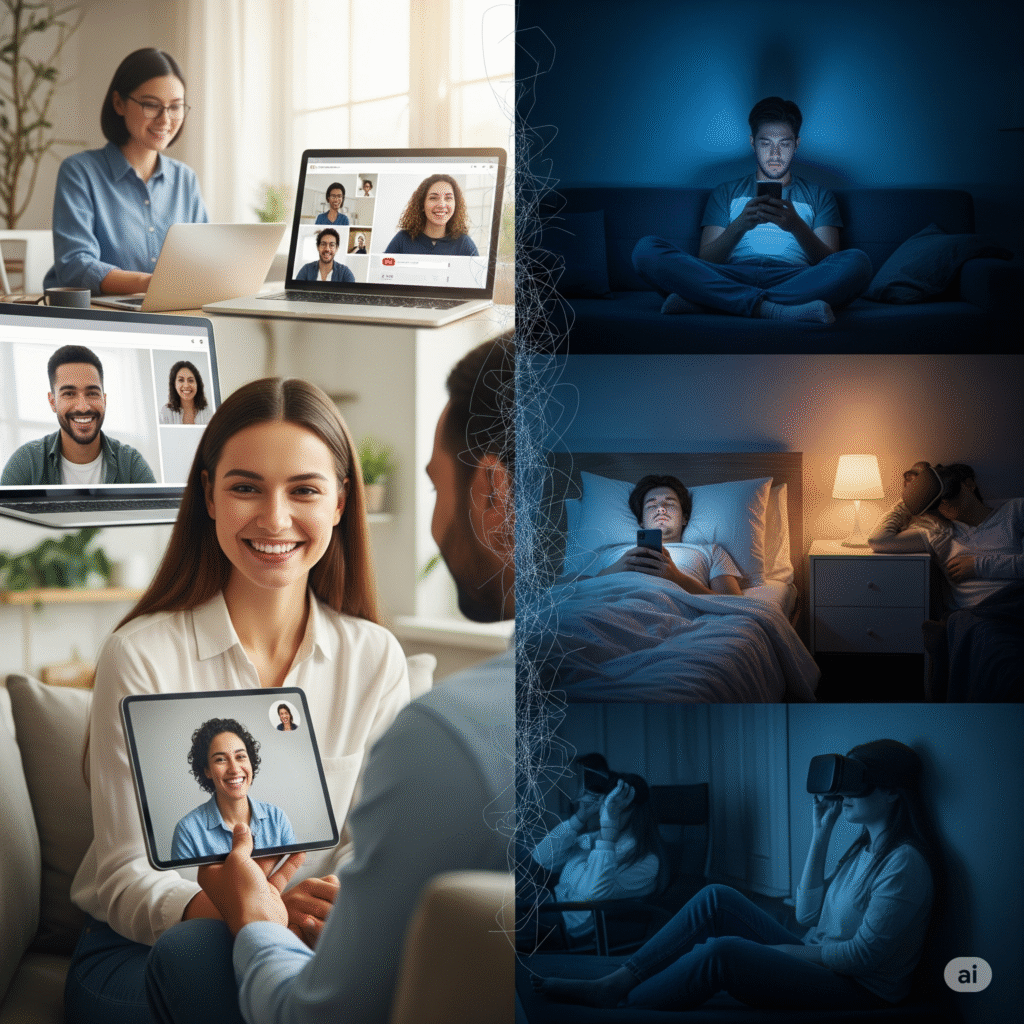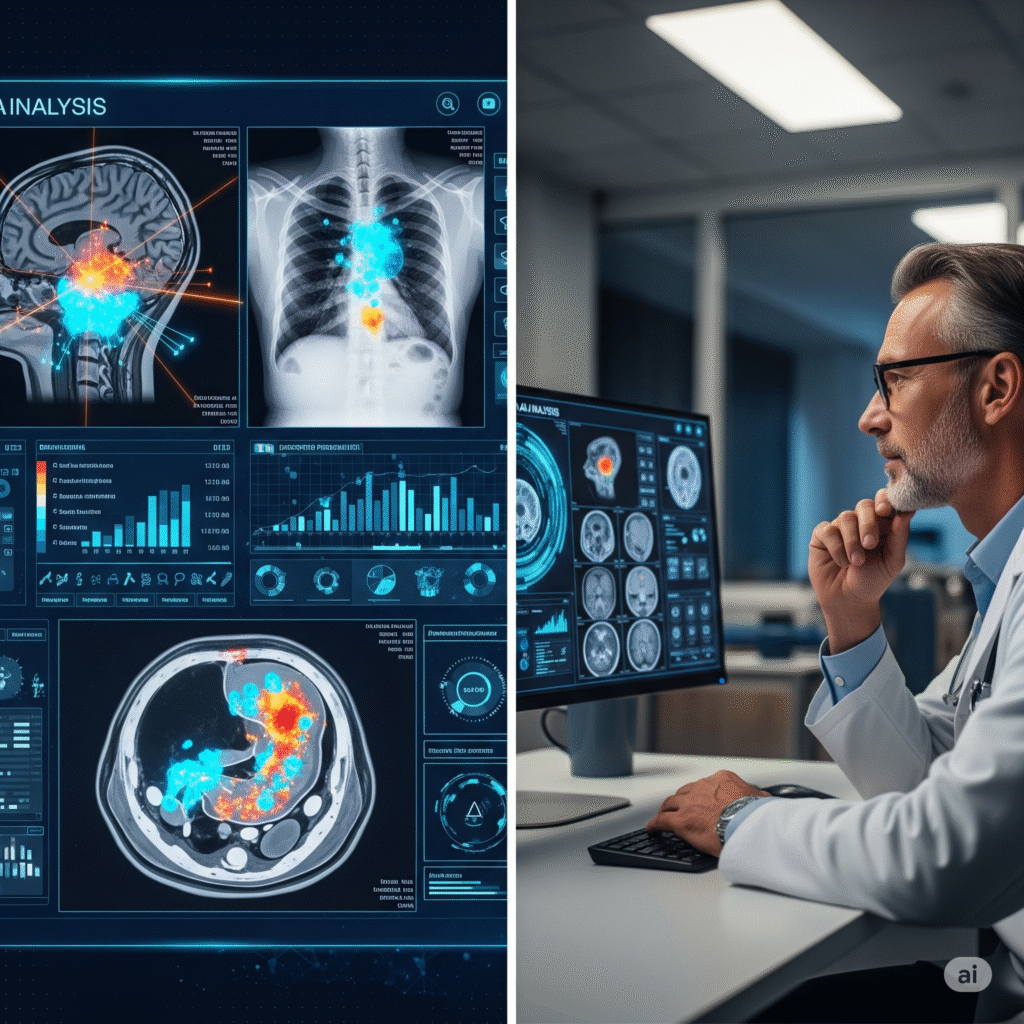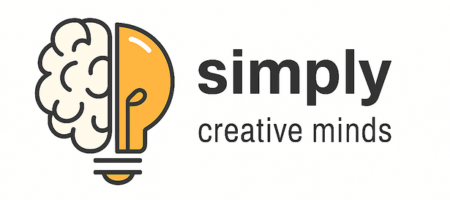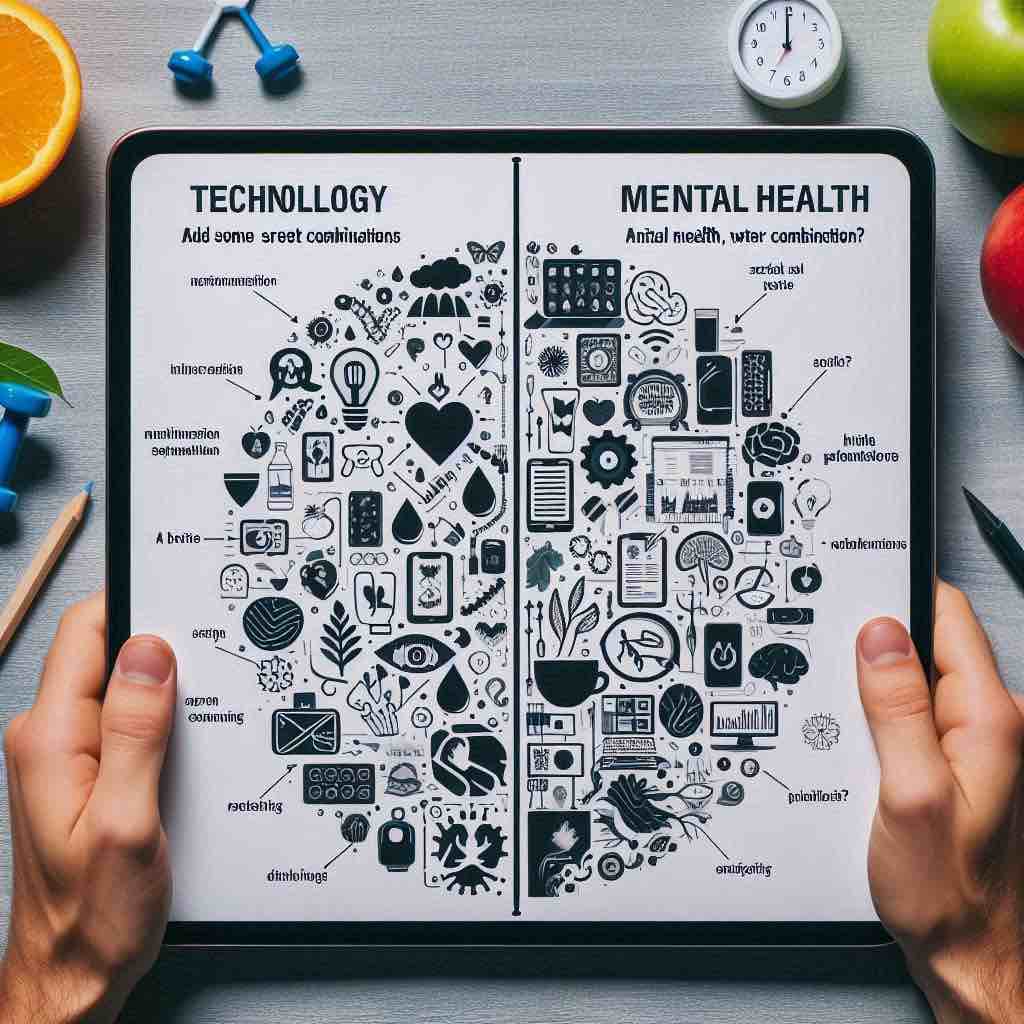Introduction
Technology surrounds us—from smartphones and social media to virtual reality and wearable devices. It has fundamentally transformed how we communicate, work, and entertain ourselves. While technology has brought numerous benefits to mental health care and connectivity, it also poses significant challenges that can affect our psychological well-being. Understanding the profound impact of technology on mental health is crucial for mindful use, helping us to leverage its benefits while navigating its potential drawbacks. This article examines the multifaceted impact of technology on mental health, presenting both its positive and negative sides.

Positive Impact of Technology on Mental Health
Technology has opened new avenues for supporting mental wellness:
- Greater Access to Mental Health Resources
- Why it matters: One significant positive impact of technology on mental health is the democratized access to vital mental health information and support services. Teletherapy platforms connect individuals with licensed therapists remotely, effectively breaking down traditional barriers of geography, cost, and the stigma often associated with seeking in-person care.
- Example: During the COVID-19 pandemic, virtual therapy saw a massive surge, providing essential, uninterrupted care when in-person visits weren’t possible. Additionally, widely available meditation and mindfulness apps like Headspace and Calm offer guided sessions that help users reduce anxiety and promote relaxation on demand.
- Building Community and Reducing Isolation
- Why it matters: Another beneficial impact of technology on mental health is its ability to foster community. Online support groups and forums provide invaluable spaces for individuals to share their experiences, find solidarity, and feel understood. Platforms such as Reddit’s various mental health communities, or dedicated support sites like 7 Cups, help people connect with others facing similar challenges. This can be especially valuable for individuals in marginalized or remote communities who may lack local support networks, reducing pervasive feelings of loneliness and isolation.
- Example: A person struggling with a rare form of depression may find encouragement, practical coping tips, and a sense of belonging from others with similar experiences in an online forum, significantly reducing their feelings of loneliness and uniqueness.
- Enhanced Mental Health Monitoring and Self-Care Tools
- Why it matters: The advancements in tracking tools represent a notable impact of technology on mental health. Wearable devices and specialized applications offer innovative ways to monitor personal well-being. Devices like the Apple Watch can track physiological data such as heart rate variability, sleep patterns, and physical activity, providing insights that can correlate with stress levels and mood fluctuations. Dedicated mental health apps can also prompt users to track mood changes, identify triggers, and practice therapeutic exercises, empowering self-awareness.
- Example: Apps like Moodpath or Daylio allow users to log their feelings daily, identify patterns in their mood changes, and gain valuable insights that can inform more productive conversations with their healthcare providers during therapy sessions.


Negative Impact of Technology on Mental Health
Despite its benefits, the pervasive nature of technology also presents distinct challenges to psychological well-being:
- Increased Anxiety, Stress, and Information Overload
- Why it matters: The constant digital influx illustrates a challenging impact of technology on mental health. Constant connectivity means a relentless flood of notifications, emails, and messages vying for our attention. This pervasive “always-on” culture can lead to mental fatigue, burnout, heightened anxiety, and a significant reduction in our ability to focus on single tasks without distraction.
- Example: Studies consistently show that frequent checking of social media feeds or email inboxes can spike cortisol (the primary stress hormone) levels, contributing to chronic stress and fragmenting attention spans, making sustained concentration difficult.
- Social Comparison and Reduced Self-Esteem
- Why it matters: The pressure from idealized online portrayals is a concerning impact of technology on mental health. Social media platforms, by their very design, often showcase idealized and heavily curated versions of life, success, and appearance. Constantly comparing oneself to others’ seemingly perfect posts can foster profound feelings of inadequacy, intense envy, and exacerbate symptoms of depression.
- Example: A young adult regularly seeing friends post glamorous vacation photos or impressive professional successes might trigger severe self-doubt, body image issues, or feelings of not being “good enough,” especially among adolescents and young adults who are still forming their identities.
- Sleep Disruption and Mental Fatigue
- Why it matters: Disrupted sleep, stemming from screen use, highlights a serious negative impact of technology on mental health. Exposure to blue light emitted from digital screens, particularly in the hours before bedtime, inhibits the natural production of melatonin, the crucial hormone that regulates our sleep-wake cycle. Poor sleep quality, a direct consequence of this disruption, significantly exacerbates existing mood disorders, increases anxiety levels, and impairs overall cognitive function and daytime performance.
- Example: Using smartphones, tablets, or laptops late at night can severely delay the onset of sleep, leading to insufficient rest, chronic daytime tiredness, irritability, and reduced resilience to daily stressors.
How to Use Technology for Mental Health in a Balanced Way
To effectively manage the overall impact of technology on mental health, adopting balanced strategies is essential to harness its benefits while mitigating its drawbacks.
- Set Boundaries: Proactively use screen time management tools available on your devices to limit time spent on social media or non-essential apps. Designate specific “tech-free” periods during your day, especially at least an hour before bedtime, to allow your mind to unwind.
- Curate Your Digital Environment: Be selective about what you consume online. Actively follow accounts and join groups that uplift, inspire, and genuinely support your mental well-being. Conversely, unfollow or mute accounts that consistently trigger negative feelings, stress, or self-comparison.
- Practice Mindfulness and Digital Detox: Incorporate mindfulness or meditation apps into your daily routine to train your attention and reduce stress. Take regular, intentional breaks from screens, engaging in offline activities such as walking in nature, reading a physical book, pursuing hobbies, or simply sitting in quiet contemplation.
- Prioritize Face-to-Face Connections: While digital connections are valuable, balance virtual interaction with real-world socializing. In-person connections foster deeper emotional bonds, provide tangible support, and are more effective at reducing feelings of loneliness and isolation.
- Seek Professional Help When Needed: Leverage technology as a convenient gateway to access professional mental health support, like teletherapy. However, it’s crucial not to rely solely on apps or online forums for serious or persistent mental health issues. Always consult with qualified healthcare professionals for diagnosis and treatment.
Summary
The impact of technology on mental health is undoubtedly a double-edged sword. It offers unprecedented tools for support, education, and connection, revolutionizing access to mental wellness resources. Yet, it also presents tangible risks such as increased anxiety, pervasive social comparison, and significant sleep disruption. The core message is to understand that a balanced approach can optimize the positive impact of technology on mental health, while diligently mitigating the drawbacks.
By setting healthy digital boundaries, curating your online experience, and strategically combining technology with essential offline self-care practices, you can effectively harness the power of tech to enhance—not harm—your mental well-being.
Want even more practical health and wellness tips? Explore our full collection of articles in the Health Tips category.
What specific strategy from this guide do you plan to implement first to better manage the impact of technology on mental health in your daily life?
Warm Roasted Sweet Potato and Kale Salad
✅ Vegan…
Zesty Southwest Chickpea Salad: Your Quick Vegan & Protein-Packed Meal
✅ Vegan…
Perfect Classic American Garden Salad: Crisp, Refreshing & Ready in 10 Minutes
✅ Gluten-Free…
Incredible Mexican Street Corn Salad: Creamy, Tangy & 15 Min
✅ Vegan…
Zesty Mexican Quinoa Salad: Protein-Packed & Ready in 20 Minutes
✅ Vegan…
Flavorful Mexican Avocado and Tomato Salad: Creamy, Refreshing & 10 Min
✅ Vegan…
Dharamshala – Where Mountains Meet Monks
Introduction Tucked…
Baijnath Temple – The Timeless Shrine of Lord Shiva
Introduction In…
Norbulingka Institute – A Living Museum of Tibetan Art & Craft
Introduction In…
Bir Billing – The Paragliding Capital of India
Introduction Imagine…
Masroor Rock Temples – The Ellora of the Himalayas
Introduction Hidden…
Palampur – Himachal’s Tea Capital Hidden in Pine Forests
Introduction Tucked…














